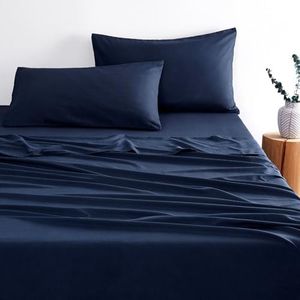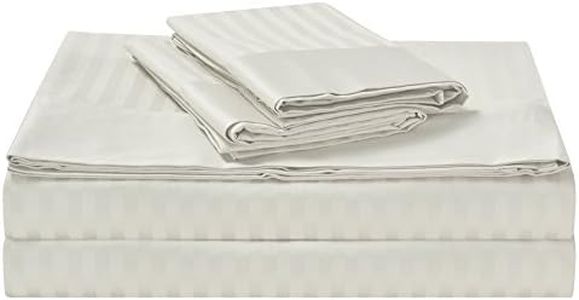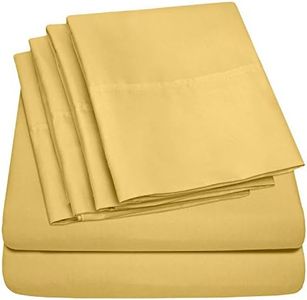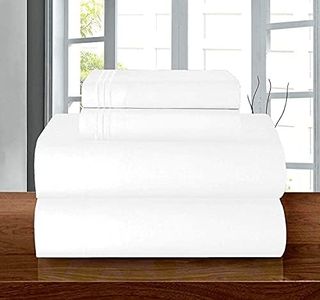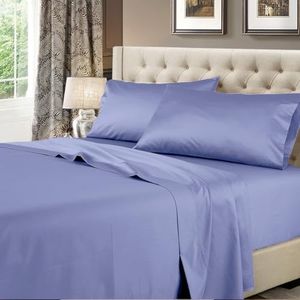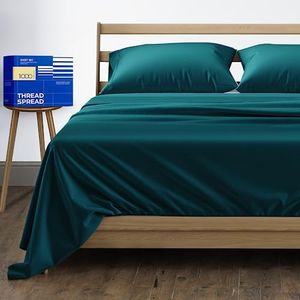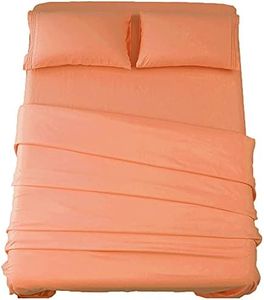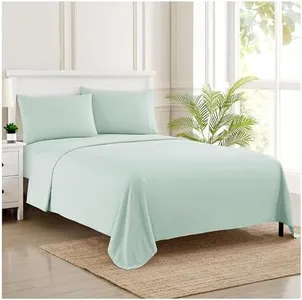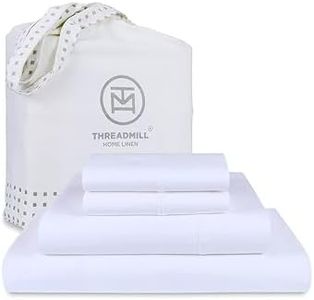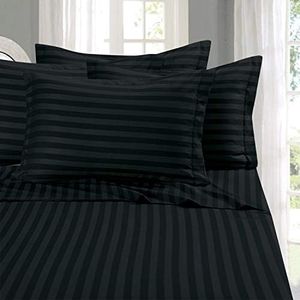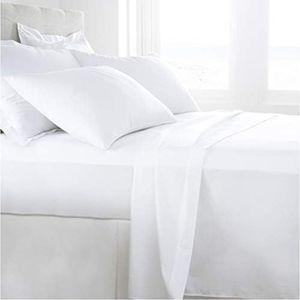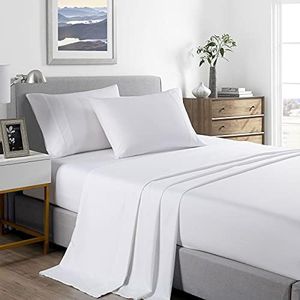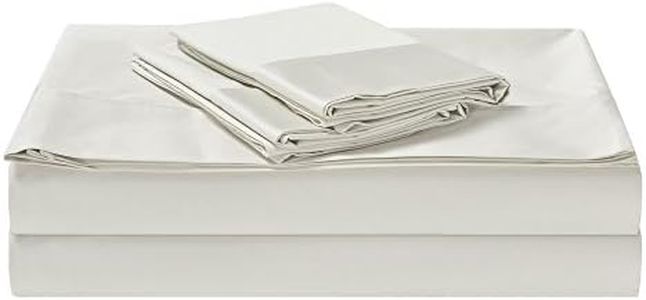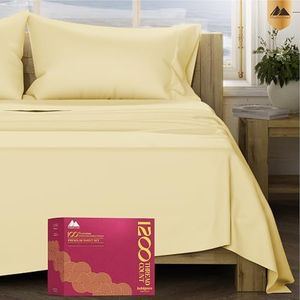We Use CookiesWe use cookies to enhance the security, performance,
functionality and for analytical and promotional activities. By continuing to browse this site you
are agreeing to our privacy policy
10 Best High Thread Count Sheet
From leading brands and best sellers available on the web.Buying Guide for the Best High Thread Count Sheet
Choosing high-thread-count sheets can be a bit overwhelming, especially given the huge range of options available and the marketing hype around the 'thread count' number. The biggest thing to keep in mind is that while thread count does matter, it's not the only factor that influences comfort, durability, and breathability. Understanding some basic terms and making decisions based on your unique sleep preferences and needs will help you select sheets you'll truly love.Thread CountThread count refers to the number of horizontal and vertical threads woven into one square inch of fabric. A higher thread count often feels smoother and can be more durable, but after a certain point, higher numbers don't always mean better quality—in fact, extremely high counts may be achieved by twisting multiple thinner fibers together, sometimes at the expense of breathability. Generally, a thread count between 200 and 400 is soft and comfortable for most people, while 400 to 800 is marketed as luxury and will have a silkier, heavier feel. If you prefer crisp, cool, and breathable sheets, aim for lower to mid-range counts; for extra softness and warmth, go higher, but beware of anything above 1000 which might be more marketing than substance.
Material (Fiber Content)The type of material the sheet is made from affects its softness, durability, and feel much more than thread count alone. Cotton is the most common, with Egyptian and Pima (Supima) cottons prized for their long, strong fibers and silky smoothness. Microfiber is soft and affordable, but less breathable. Linen is cool and moisture-wicking but has a coarser feel. For those with sensitive skin or who sleep hot, natural fibers like cotton or linen are often better. If you want something cozy or for cooler climates, microfiber or higher thread count cotton can be ideal.
Weave TypeThe weave is how the threads are put together and has a significant impact on the sheets’ hand feel and performance. Percale is a simple, tight weave that produces a crisp, cool, and lightweight sheet, great for hot sleepers. Sateen has a satin-like finish—soft, smooth, and slightly heavier, which feels warmer and drapes better. Choose percale if you want that 'hotel sheet' feel or sleep hot; opt for sateen if you prefer a silkier texture and a bit of warmth.
Fit (Size and Pocket Depth)Fit refers to the dimensions of the sheets, especially the depth of the fitted sheet corners. Standard mattresses may require a 14-inch pocket, while thicker, pillow-top, or foam mattresses might need a 'deep' or even 'extra deep' pocket of 16-22 inches. Measuring your mattress height and checking product measurements ensures your sheet won't bunch up or pop off at night. People with mattress toppers or particularly deep mattresses should always look for these deeper pockets.
Care and DurabilityCare instructions indicate how easy it is to maintain your sheets—some materials wrinkle more, others require special washes, and certain weaves may pill over time. If you’re after low-maintenance and long-lasting sheets, cotton blends or microfiber may require less fuss. If you don’t mind ironing or want more natural fibers, be aware that luxury cotton or linen will need a bit more care. Weight how often you want to replace or care for your sheets against your preferred feel.
